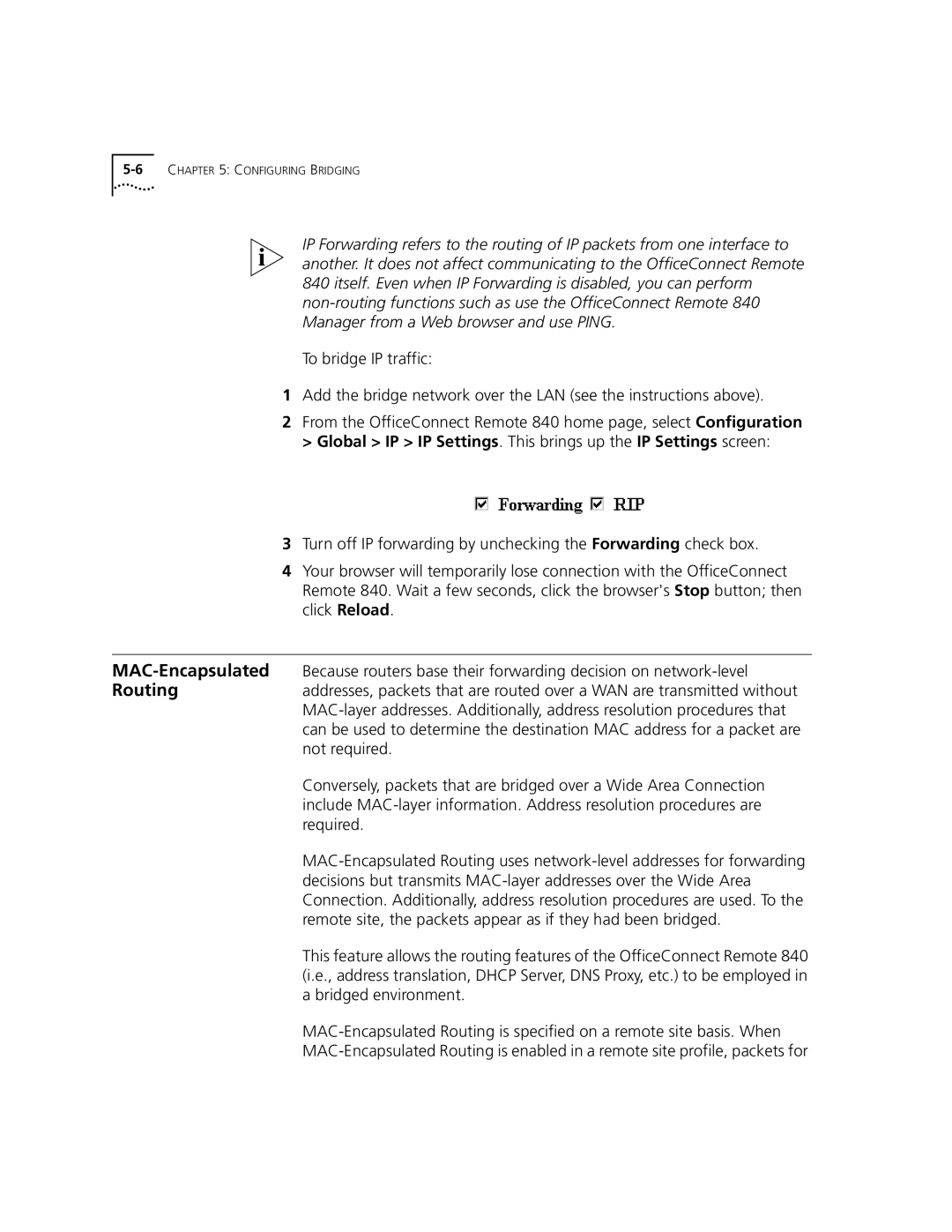
5-6 CHAPTER 5: CONFIGURING BRIDGING
IP Forwarding refers to the routing of IP packets from one interface to another. It does not affect communicating to the OfficeConnect Remote 840 itself. Even when IP Forwarding is disabled, you can perform
To bridge IP traffic:
1Add the bridge network over the LAN (see the instructions above).
2From the OfficeConnect Remote 840 home page, select Configuration > Global > IP > IP Settings. This brings up the IP Settings screen:
3Turn off IP forwarding by unchecking the Forwarding check box.
4Your browser will temporarily lose connection with the OfficeConnect Remote 840. Wait a few seconds, click the browser's Stop button; then click Reload.
Routingaddresses, packets that are routed over a WAN are transmitted without
Conversely, packets that are bridged over a Wide Area Connection include
This feature allows the routing features of the OfficeConnect Remote 840 (i.e., address translation, DHCP Server, DNS Proxy, etc.) to be employed in a bridged environment.
